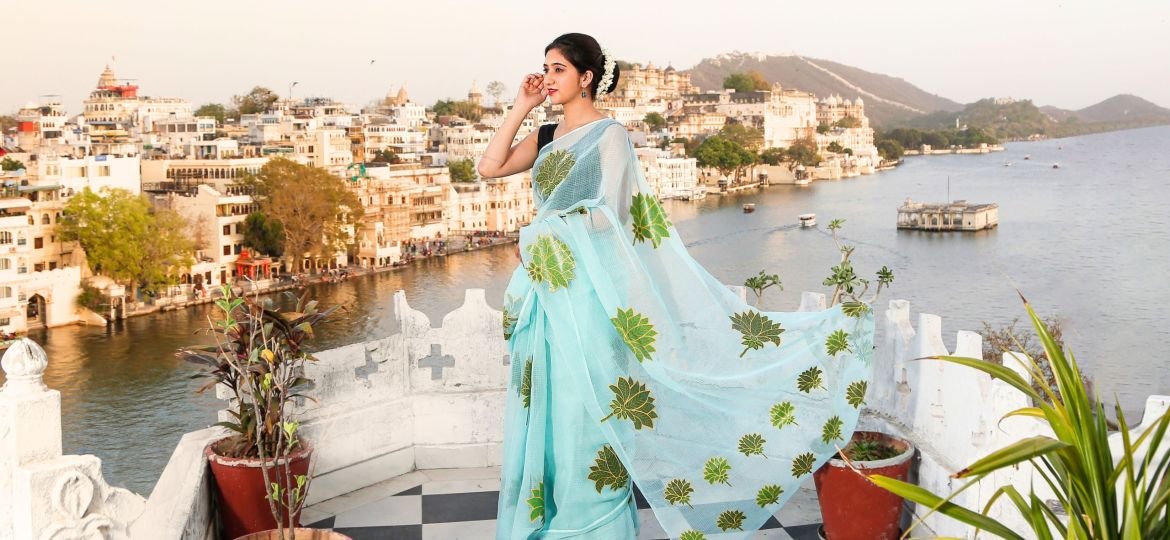
Can your online customer feel the softness of your fabric—or see its shimmer?
Of course not. And that’s the biggest challenge in fabric e-commerce.
When buyers can’t touch your material, they rely 100% on your photos to judge quality, texture, color, and finish. Whether you’re selling fabrics online through handloom cotton, silk blends, or designer textiles on Shopify, Etsy, or Amazon—your images are your strongest salesperson.
In this guide, we’ll show you how to click fabric photos that build trust, attract attention, and help your product sell itself—even if you’re just starting out with a smartphone and a passion for your fabric business.
Why Fabric Photography Matters in Online Selling
Let’s face it—when it comes to fabrics, detail is everything. The weave, the sheen, the drape—these are the things that make or break a purchase. That’s why high-quality fabric photography is not optional—it’s essential.
According to a recent Shopify survey, 75% of online shoppers rely on product photos before making a purchase decision. For texture-based items like fabric, this number is even higher.
Photos replace the sense of touch in e-commerce. A well-lit, clear image can tell your customer:
📌 How smooth or coarse the fabric is
📌 Whether it flows or holds shape
📌 How it looks under natural or artificial light
If your photo is dull, poorly lit, or misleading, you risk losing trust—and the sale. Great photos don’t just show fabric—they sell the experience of using it.
Essential Setup for Fabric Photography (DIY-Friendly)
You don’t need a studio or expensive gear for professional fabric photoshoots—here’s what you do need for a great DIY setup:
📸 Camera or Smartphone
Modern smartphones (iPhone, Samsung, Pixel) shoot excellent photos. Use the main back camera, not selfie mode, for better resolution.
💡 Lighting
Natural light is your best friend. Shoot near a large window during daytime, using sheer curtains to diffuse harsh sunlight. Avoid yellow indoor lights.
DIY Tip: Use white foam boards on the sides to bounce light and reduce shadows.
🏞️ Background
Keep it simple. A white table, wooden board, or clean flat surface works well. Neutral tones highlight fabric texture and color better.
🧷 Clamps, Stands & Props
Use clips or double tape to keep fabric flat. You can drape the fabric, roll it, fold it, or show it in use (e.g., as a dupatta or curtain). Use mannequins or models if needed to demonstrate flow.
A clean, wrinkle-free layout makes all the difference.
Capturing True Color and Texture
One of the biggest issues in fabric photography? Colors that look different on-screen.
Here’s how to fix that:
✅ Use Natural Daylight
Artificial lights often distort color. Daylight maintains true tones, especially for whites, blacks, and vibrant fabrics like reds or blues.
✅ Showcase Texture
Use a combination of:
📌 Flat-lay shots (for design clarity)
📌 Close-up shots (to show weave, print, embroidery)
📌 Angled shots (to reveal sheen or transparency)
Create soft shadows to reveal texture without overpowering the photo. A wrinkled look may show the drape better—but avoid creases that make the product look unkempt.
✅ Don’t Over-Edit
Editing tools like Snapseed, Lightroom, or Canva can adjust brightness and contrast. But avoid filters that change color or texture—this can mislead customers and cause returns.
Always compare the edited image with the real fabric in daylight before uploading.
Platform-Specific Image Guidelines: Shopify, Etsy & Amazon
Each platform has specific requirements—ignore them, and your listing may suffer in visibility and trust.
🛒 Amazon
📌 Main image must have a pure white background (#FFFFFF)
📌 Minimum 1000px; recommended 1600px on the longest side
📌 Product should occupy 85% of the frame
📌 Use zoomable, high-res images to show details
🛍️ Shopify
📌 Preferred size: 2048 x 2048 px square format
📌 Keep image style consistent across all product listings
📌 Add alternate shots: close-up, drape, texture
📌 Use ALT text for SEO boost
🧵 Etsy
📌 First image should be attractive & informative
📌 Ideal size: 2000px width
📌 Showcase handmade or artisan feel—lifestyle photos work well
📌 Include at least 5 images per listing
🎯 Pro Tip: Always test how your fabric images look on mobile. Most buyers browse from their phones.
Common Mistakes to Avoid
🚫 Poor Lighting – Causes inaccurate colors and unprofessional look
🚫 Inconsistent Backgrounds – Make your shop look cluttered and untrustworthy
🚫 Misleading Color Correction – Increases returns & buyer complaints
🚫 Un-ironed Fabrics – Wrinkles reduce perceived value
🚫 Too Few Angles – Leaves customers guessing
✅ Quick Fixes:
📌 Shoot in natural light
📌 Iron your fabrics before every shoot
📌 Always preview on mobile
📌 Keep a consistent editing style
Conclusion: Let Your Fabric Speak Through Visuals
When your product is all about feel and quality, the photograph must do the talking. With a few smart techniques and consistency, even beginners can shoot fabric photos that impress, build trust, and drive more sales.
Whether you’re selling fabrics online like traditional sarees, artisanal cotton, or modern fashion textiles—remember: good visuals = strong sales.
📷 Ready to Make Your Fabrics Stand Out?
At MN Photography, we help fabric brands turn textures into trust. From handcrafted textiles to luxurious fashion fabrics, we know how to make every thread shine through the lens. Whether you’re just starting out or ready to level up—we’ve got your back.
📩 Book your professional fabric photoshoots today and let your visuals do the selling.
Follow us on Instagram: @mnphotographyofficial

